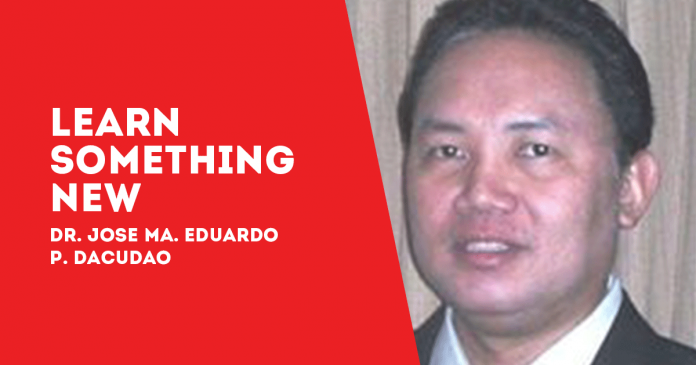
BY DR. JOSE PALU-AY DACUDAO
THERE ARE two ways to test hypotheses:
1. By observation (of more empirical facts).
Ex: After observing all mammals in the world, we find that all have hair (including horses) during some time in their development. Thus, the hypothesis that all mammals have hair stands.
It is a useful hypothesis or theory that can predict the presence of hair in a previously undiscovered mammal. Thus, one day we find a new species of dolphin in the Tanon strait between Negros and Cebu. We predict that it has to have hair. We search the adults – no hair. Then we extend the search to the baby dolphins and embryos – we find hair on their snouts. So our hypothesis that all mammals have hair is strengthened.
Ex: We test the general hypothesis that all quadrupeds have hair. Now, this general hypothesis leads to the specific hypothesis that crocodiles have hair. We then test this specific hypothesis by examining thousands of crocodiles, from babies still in their eggs to old 20 footers, and we never find any hair.
(On further investigation, we even find the same hairless condition on all reptiles, birds, and amphibians that we find to be four footed.) So we reject the specific hypothesis that “Crocs have hair” and the general hypothesis that “All quadrupeds have hair.”
Ex: We test the specific hypothesis “Masbatenos regard themselves as Visayans” by asking a sample population of them if this is in fact true. If this hypothesis is validated, then we also would have strengthened our general hypothesis, that there are other peoples in southern Philippines who speak related languages that regard themselves as Visayans.
We might further investigate the matter by asking around in the area if this is in fact true.
Zwichenzug: Having said that, how do we handle such ‘hypotheses’ as “There are Fairies somewhere in the world” or “God exists”?
The answer is that these are outside the scope of Science because they inherently, by their definitions, cannot be tested, or disproved. After searching the whole world for Fairies and the whole universe for God, and not finding them in the context of human senses, the believer can always say that we just did not find them, or that they exist but our three-dimensional senses are incapable of perceiving them.
The fact that the definition of a fairy or God includes the trait of preternaturality or supernaturality, which by definition is a trait that cannot be totally perceived by our senses, means that Science, which deals with what we can sense, cannot adequately deal with a fairy or God. The scientist has to be able to find the means to disprove a hypothesis. A hypothesis has to be testable to be valid.
On the other hand, if we define God specifically as a Conscious Creator of the Universe, there might be ways to test His/Her/Its existence. For example, as the American astronomer Carl Sagan envisioned, we can compute for the transcendental fundamental constants of nature, which are literally woven in the stuff of reality, such as pi, to their nth places as far as we can go with our supercomputers.
If somewhere on the zillionth decimal place of pi, there is a sudden pattern among random numbers that probability theory cannot adequately explain, then it might be taken to mean as God’s signature in Creation, assuming that probability theory is correct.
As Sagan proposed in the science-fiction book ‘Contact’, a scientist discovered that a perfect circle can be drawn from the binary sequence of numbers that composes the transcendental constant pi, which is also the constant of nature that is always associated with circles, somewhere in its nth decimal places, an event that is so highly improbable that the most logical way to explain it is that a ‘God’ wrote it into the fabric of reality itself.
In this case, the hypothesis is expressed in a negative manner, a null-hypothesis. The null-hypothesis to be disproved is “God, the Conscious Creator, does not exist.” Therefore, transcendental fundamental constants of nature/creation must have completely random repeating numbers.
If a transcendental constant of nature suddenly exhibits a pattern somewhere in its zillionth nth place, or even an outright message for us conscious beings, it could only have been placed there by a conscious creator. Therefore, we reject the null hypothesis “God does not exist.” Therefore, God exists.] (To be continued)/PN







